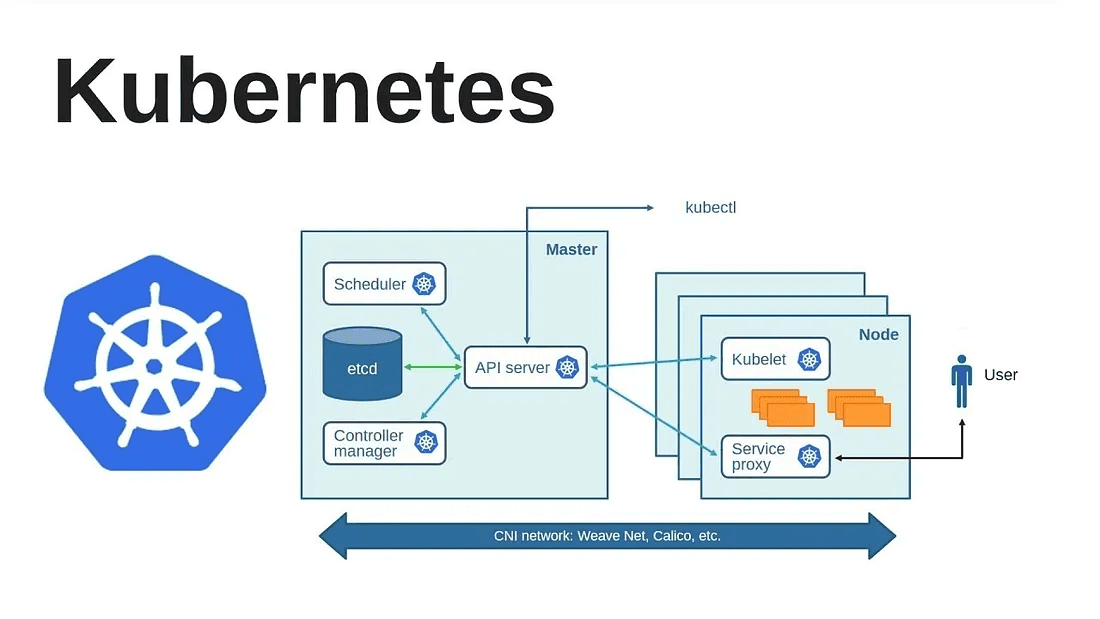- Published on
Demystifying Kubernetes Architecture
- Authors

- Name
- Syed Muhammad Ali Haidry
- @AliHaidry5

Kubernetes Architecture Explained
This document explains the key components that make up the architecture of a Kubernetes cluster, in simple terms.
Table of Contents
Control Plane (Master Node Components)
API Server
This is the "front desk" of Kubernetes. Whenever you want to interact with your cluster, your request goes through the API Server. It validates and processes these requests to the backend components.
etcd
Think of this as the "database" of Kubernetes. It stores all the information about your cluster—what nodes are part of the cluster, what pods are running, what their statuses are, and more.
Scheduler
The "event planner" for your containers. When you ask for a container to be run, the Scheduler decides which machine (Node) in your cluster should run it. It considers resource availability and other constraints while making this decision.
Controller Manager
Imagine a bunch of small robots that continuously monitor the cluster to make sure everything is running smoothly. If something goes wrong (e.g., a Pod crashes), they work to fix it, ensuring the cluster state matches your desired state.
Cloud Controller Manager
This is a specialized component that allows Kubernetes to interact with the underlying cloud provider, like AWS or Azure. It helps in tasks like setting up load balancers and persistent storage.
Worker Node Components
kubelet
This is the "manager" for each worker node. It ensures all containers on the node are healthy and running as they should be.
kube-proxy
Think of this as the "traffic cop" for network communication either between Pods or from external clients to Pods. It helps in routing the network traffic appropriately.
Container Runtime
This is the software used to run containers. Docker is commonly used, but other runtimes like containerd can also be used.
Other Components
Pod
The smallest unit in Kubernetes, a Pod is a group of one or more containers. Think of it like an apartment in an apartment building.
Service
This is like a phone directory for Pods. Since Pods can come and go, a Service provides a stable "address" so that other parts of your application can find them.
Volume
This is like an external hard-drive that can be attached to a Pod to store data.
Namespace
A way to divide cluster resources among multiple users or teams. Think of it as having different folders on a shared computer, where each team can only see their own folder.
Ingress
Think of this as the "front door" for external access to your applications, controlling how HTTP and HTTPS traffic should be routed to your services.
And there you have it! That's a simplified breakdown of Kubernetes architecture components.